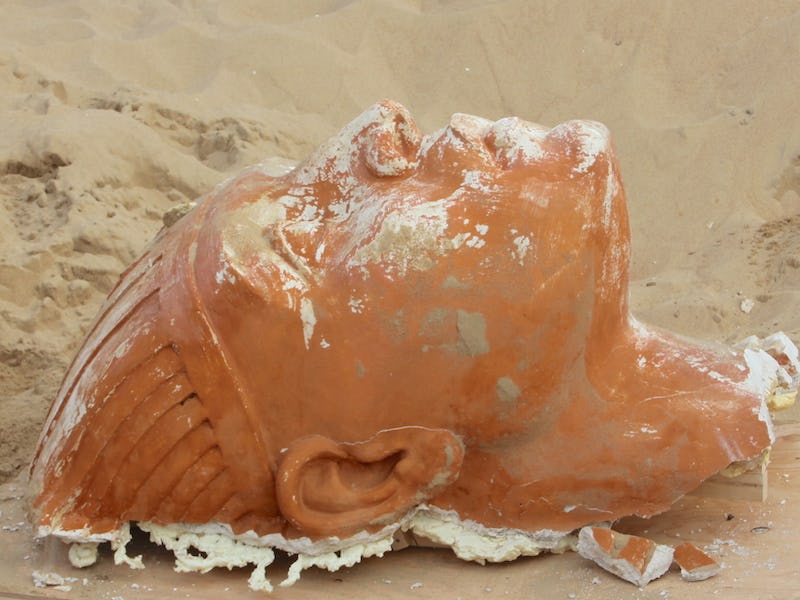Archeologists Dig Up Lost Hollywood Props in the Guadalupe-Nipomo Dunes
It's 300 pounds of movie magic.

Long ago, in the year of our Lord 1923, director Cecil B. DeMille organized the construction of the set for his epic, silent film The Ten Commandments. Because this was the “golden age” of Hollywood, DeMille’s “city of the pharaoh” was built in the Guadalupe-Nipomo Dunes in central California — a landscape complete with giant pharaoh statues and massive temples, making it the largest movie set ever built at the time. When the filming was over, DeMille ordered the set be taken down and some items be secretly buried in the hills of sand.
Movie-buffs and archeologists have been excavating the dunes, searching for these Ten Commandments artifacts since the ‘80s, but the most exciting discovery has only just been made. On Monday, the Dunes Center, a nonprofit affiliated with the Guadalupe-Nipomo Dunes, announced archeologists had discovered a “perfectly intact” 300-pound plaster sphinx, which was part of the set 95 years ago.
While most of the items previously found have been colored white or light peach, a prop choice thought to be made to accommodate the film’s black and white filming, this head is a bright terra-cotta orange.
The head will be housed in the Dunes Center museum in downtown Guadalupe.
“The piece is unlike anything found on previous digs,” Doug Jenzen, executive director of the Dunes Center, announced in a statement. “The majority of it is preserved by sand with the original paint still intact. This is significant and shows that we’re still learning unexpected facets to film historical movie production, such as the fact that objects in black and white films were actually painted extremely intense colors.”
The archeologists encountered the head when they went back to the site to excavate the remainder of a previously found Sphinx body. Overall, there were once 21 sphinx bodies on set, designed by French designer (and Coco Chanel’s lover) Paul Iribe. While it was known that these items were there — it was rumored that DeMille ordered them buried to avoid the costs of moving them out, as well as to ensure that they couldn’t be used by rival filmmakers — the process of excavation has been slow because of the costs.
An excavated sphinx body in the Guadalupe Dunes.
The set pieces are thought to have survived so well because sand allows for drainage; if not for the sand, Jenzen says the relics would “turn to mush.” This newly discovered face measures in at five and a half feet by three feet by eight feet. To get it out of the swimming pool-sized hole it was dug up in, they fastened surfboards to plywood and sledded it out of the dunes.
It will be put on display sometime in summer 2018, along with the other set items found, as well as some everyday items that belonged to the crew working on the set at the time — items like prohibition-era liquor bottles, makeup, and tobacco tins.
Californian archeology.
“It was in such amazing shape,” Jenzen told The Tribune. “I noticed that everyone from the archeologists to the artists to some of the donors that we had taken out there, everyone wanted to see the face. They weren’t really interested in the body that I intended to get.”